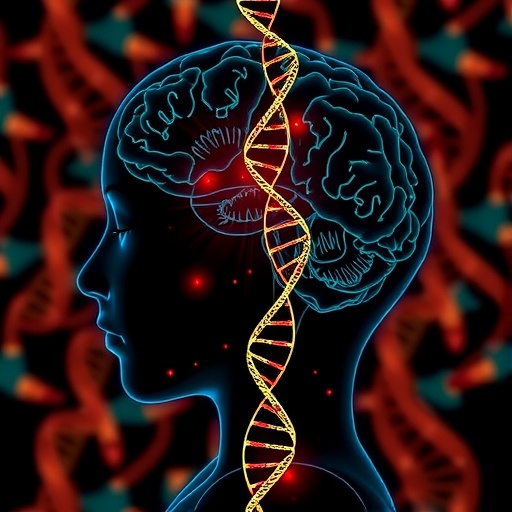In the realm of gene therapy, the development of targeted delivery methods has emerged as one of the most significant advancements. Recent research has delved into the intricate relationship between cardiac-specific promoters and adeno-associated virus (AAV)-mediated gene therapy, particularly focusing on cardiac troponin T (cTnT) gene regulation. This pivotal study promises to refine the specificity of therapeutic interventions designed for cardiac conditions, bringing hope to countless patients suffering from heart diseases.
Adeno-associated viruses (AAVs) have long been recognized as promising vectors for gene therapy due to their ability to deliver genetic material effectively and their relatively low pathogenicity. Researchers at the forefront of this innovative study, Astavans and Barth, have been investigating how variations in promoter sequences can enhance cardiac specificity when employing AAVs. The results are not just incremental; they signify a leap toward more personalized and effective cardiac therapies.
Promoters are critical components of gene expression, serving as regulatory sequences that dictate when and how much gene product is produced. The cardiac troponin T gene, pivotal in cardiac muscle function, is encoded by one of these promoters. The study emphasizes optimizing this promoter to ensure that gene therapy solutions target cardiac tissue without affecting other organs adversely. This specificity is crucial to minimizing potential side effects that could arise from off-target gene expression.
Recent advances in molecular biology techniques have allowed for a detailed examination of these promoter sequences. By utilizing cutting-edge genome editing tools and high-throughput sequencing methods, the researchers were able to compare different variants of the cTnT promoter. Their findings suggest that certain elements within the promoter significantly enhance cardiac-specific expression. The implications of this discovery could redefine treatment strategies for heart diseases, providing a more reliable and tailored therapeutic approach.
Furthermore, the study explores the ramifications of these findings in the context of AAV-mediated delivery systems. The researchers demonstrated that utilizing optimized cTnT promoters within AAV vectors markedly improved the efficiency of gene delivery to cardiac tissues. This enhancement suggests that future gene therapies could yield higher success rates and better patient outcomes, effectively steering therapeutic interventions toward more successful trajectories.
The innovation doesn’t stop at discovery; it extends to potential clinical applications. By employing modified AAVs carrying the optimized cTnT promoter, researchers envision treating a wide array of cardiac conditions ranging from inherited cardiomyopathies to acquired heart diseases. The researchers are optimistic that this tailored approach not only increases the likelihood of successful gene therapy but also bridges the gap between basic research and clinical practice.
In light of the ethical and safety concerns surrounding gene therapy, the study also engages in a thorough examination of the safety profiles associated with these optimized vectors. By comparing the performance of traditional AAVs with those utilizing the novel cTnT promoters, the researchers provided compelling evidence that the new approaches not only enhance efficacy but also maintain an essential safety quotient. This balance of efficacy and safety is paramount in translational medicine.
It is essential to recognize the broader implications of this research beyond immediate cardiovascular applications. The methodologies developed and the insights gained could potentially be applicable to other tissues and organ systems. The exploration of promoter architecture and its effect on gene expression holds the potential for revolutionizing gene therapy for a range of diseases, opening avenues for similar applications in conditions affecting skeletal muscle and other tissues.
As the study progresses toward potential clinical trials, the researchers are keen to collaborate with pharmaceutical companies and clinical institutions. Their aim is to bridge their laboratory findings with real-world clinical situations. Engaging with key stakeholders in the medical field will enhance the viability of translating these innovative findings into tangible, patient-centered treatments.
In conclusion, the advancement represented by the optimization of cardiac-specific promoters in AAV-mediated gene therapy is nothing short of revolutionary. The interplay between innovative science and patient care exemplifies how far the field of gene therapy has evolved. While challenges remain, such as regulatory hurdles and long-term safety trials, the optimism stemming from this research embodies the relentless drive for progress in treating devastating cardiac conditions.
Ultimately, the essence of this study lies in its potential to pioneer a new pathway in cardiac gene therapy, shedding light on previously ambiguous territories within gene regulation. As researchers continue to unveil the complexities of gene expression and promoter interactions, the future of cardiac therapeutics appears promising—offering hope to many whose lives are profoundly affected by heart disease and related conditions.
The promise of this research shines brightly as it compels the scientific community to reconsider the frameworks within which gene therapy operates. By delving deeper into the biology of gene expression modulation, like that of cTnT, the foundations of cardiovascular therapeutics are experiencing a renaissance that may lead to breakthroughs we once deemed unattainable. It is an exciting time in the realm of gene therapy, and as the research unfolds, the prospects for advancing cardiac health grow more tangible.
Subject of Research: Cardiac Troponin T Promoters and AAV-mediated Gene Therapy
Article Title: Cardiac troponin T promoters lead the way: optimizing cardiac specificity in AAV-mediated gene therapy
Article References:
Astavans, A., Barth, A.S. Cardiac troponin T promoters lead the way: optimizing cardiac specificity in AAV-mediated gene therapy.
Gene Ther (2025). https://doi.org/10.1038/s41434-025-00576-z
Image Credits: AI Generated
DOI: 29 October 2025
Keywords: Cardiac Gene Therapy, Adeno-Associated Virus, Troponin T, Gene Regulation, Therapeutic Approaches
Tags: AAV gene therapy for cardiac conditionsadeno-associated virus vectors for gene therapyadvancements in gene therapy technologycardiac troponin T gene regulationcardiac-specific promoters in gene therapyenhancing specificity in gene therapygene expression regulation in cardiac therapyimproving therapeutic interventions for heart diseasesoptimizing gene therapy for heart diseasespersonalized cardiac therapiesresearch on cardiac gene therapy efficacytargeted delivery methods in gene therapy





